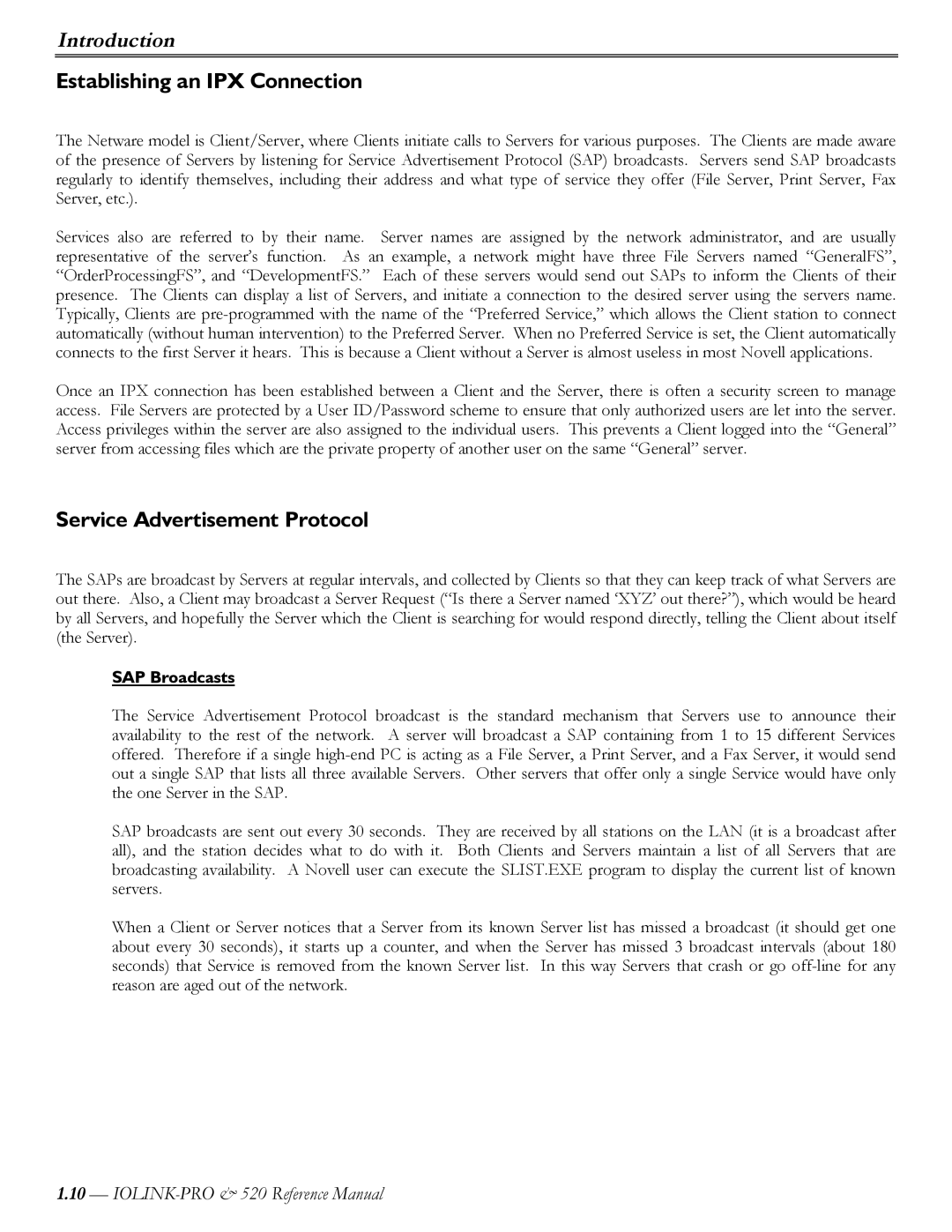Introduction
Establishing an IPX Connection
The Netware model is Client/Server, where Clients initiate calls to Servers for various purposes. The Clients are made aware of the presence of Servers by listening for Service Advertisement Protocol (SAP) broadcasts. Servers send SAP broadcasts regularly to identify themselves, including their address and what type of service they offer (File Server, Print Server, Fax Server, etc.).
Services also are referred to by their name. Server names are assigned by the network administrator, and are usually representative of the server’s function. As an example, a network might have three File Servers named “GeneralFS”, “OrderProcessingFS”, and “DevelopmentFS.” Each of these servers would send out SAPs to inform the Clients of their presence. The Clients can display a list of Servers, and initiate a connection to the desired server using the servers name. Typically, Clients are
Once an IPX connection has been established between a Client and the Server, there is often a security screen to manage access. File Servers are protected by a User ID/Password scheme to ensure that only authorized users are let into the server. Access privileges within the server are also assigned to the individual users. This prevents a Client logged into the “General” server from accessing files which are the private property of another user on the same “General” server.
Service Advertisement Protocol
The SAPs are broadcast by Servers at regular intervals, and collected by Clients so that they can keep track of what Servers are out there. Also, a Client may broadcast a Server Request (“Is there a Server named ‘XYZ’ out there?”), which would be heard by all Servers, and hopefully the Server which the Client is searching for would respond directly, telling the Client about itself (the Server).
SAP Broadcasts
The Service Advertisement Protocol broadcast is the standard mechanism that Servers use to announce their availability to the rest of the network. A server will broadcast a SAP containing from 1 to 15 different Services offered. Therefore if a single
SAP broadcasts are sent out every 30 seconds. They are received by all stations on the LAN (it is a broadcast after all), and the station decides what to do with it. Both Clients and Servers maintain a list of all Servers that are broadcasting availability. A Novell user can execute the SLIST.EXE program to display the current list of known servers.
When a Client or Server notices that a Server from its known Server list has missed a broadcast (it should get one about every 30 seconds), it starts up a counter, and when the Server has missed 3 broadcast intervals (about 180 seconds) that Service is removed from the known Server list. In this way Servers that crash or go
1.10—
